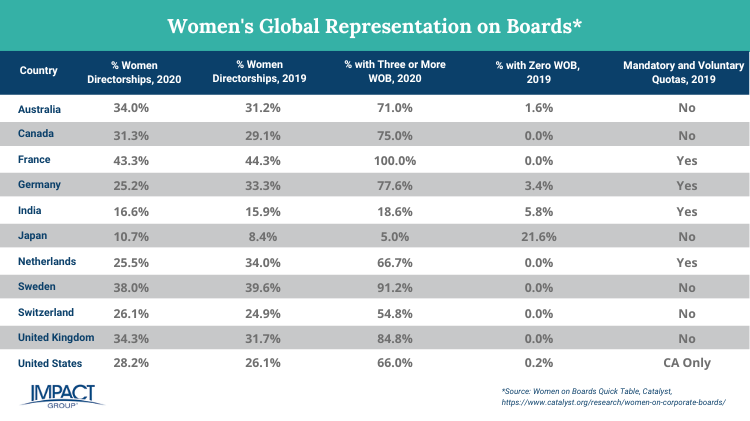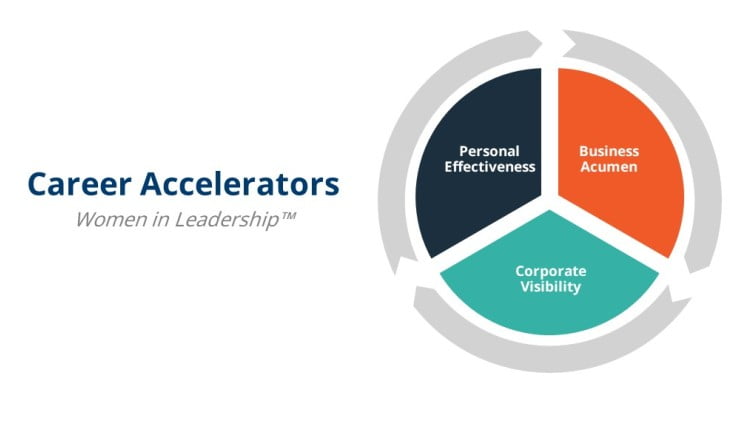Women in Finance Miss Out on Equal Pay & Proportionate Share of Top Jobs
In fact, some statistics suggest that finance is perhaps the worst industry as measured by equitable treatment of women. Case in point: The finance and insurance industry suffer from the largest wage gap compared to other industries. On average, men in finance take home $33,000 more than women in finance every year, according to the U.S. Census Bureau’s 2019 inflation-adjusted data.
ADP says banking and finance is the second worst when it comes to gender disparity. They report the average salary for women in the banking and finance sector was $27 per hour in 2019. Compare this to an average hourly wage of $40 for men. Women in finance also endure a promotion gap, with men taking about 6.6 years to be promoted compared to 7.4 years for women.
According to 100 Women in Finance, despite better performance of female-managed funds, woman-owned companies oversee 2% or less of mutual/hedge fund and real estate investments and approximately 8% of the assets in private equity. And Deloitte reports that, as of 2019, only six of the 107 largest public financial services companies in the U.S. had female CEOs.
Gender Parity Stops After Entry-Level Positions for Women in Finance
While gender parity is found across most entry-level positions in the financial services sector, the Women in the Workplace report released by McKinsey & Company and LeanIn.Org reveals that women in North America—particularly women of color—are dramatically underrepresented in senior roles. As stated by McKinsey, the industry-specific analysis “reveals a leaky pipeline from which women are falling out in greater numbers as they progress up the career ladder. This results in significant inequality at the top.”
Women account for 52% of the jobs in finance. However, they are more likely to be lower-paid individual contributors and in lower levels of management. At the start of 2021, the number of women fell at every step up the corporate ladder. In the C-suite, white women accounted for only 23% of executives. Women of color accounted for another 4%, according to McKinsey.
Because of this, it’s no surprise substantial legal action has been taken. Major companies have settled more than a billion dollars in gender discrimination claims. Banks are among the most-penalized corporations over the past two decades, according to Good Job First’s Big Business Bias Report.
Women Need Less Talk, More Action
Recent actions may result in significant gender rebalancing of the boardroom and executive suite.
In Europe, several countries passed laws requiring corporations to increase representation of women on boards of public companies. Taking this a step further, France’s Parliament passed new legislation to require 30% of either gender on executive teams and leadership pipelines. This law will affect companies with more than a thousand employees by 2027, which will increase to 40% by 2030.
Elisabeth Moreno, France’s minister delegate for gender equality who started her career in sales and customer care, spent 30 years in the tech industry with Orange, DELL, Lenovo, and HP. “There are a lot of people who talk, talk, talk about more gender balance. But there is a lot more talk than there is action,” Moreno observed.

Changes in the U.S. Affecting Gender Equality
In 2021, Nasdaq proposed its Board Diversity Rule. This requires companies listed on its U.S. exchange to disclose board-level diversity statistics to the public. Nasdaq-listed companies that don’t have at least two diverse directors must also file an explanation as to why.
The SEC approved Nasdaq’s new requirement, which will go into effect in 2023. This act has spurred numerous women and people of color to be invited to corporate boards.

Factors That Drive Women in Finance to Leave
COVID was a huge factor. It started a downhill snowball effect in which women left finance in growing numbers. In a survey conducted by Accenture, 29% of women working in financial services said they left their job either permanently or temporarily during the pandemic. Thirty-four percent (34%) of women who hadn’t left said they were considering leaving their current firms. More than half of the women who were thinking about leaving had more than five years of industry experience.
Accenture conducted its study in May 2021 and included 500 respondents across the U.S. It had equal representation of women working in banking, capital markets, and insurance.
Apart from the pandemic, women deal with these other factors as they seek career advancement.
1. Bias is a known factor.
Since most senior roles are held by men, their conscious or unconscious bias may cause them to search for similar employees to mentor and promote. This results in fewer women in leadership positions. And when women perceive such bias, many prefer to leave the industry rather than stay where they believe the system is “rigged” to nurture male employees’ careers disproportionately to their own.
2. Tradition and traditional stereotypes are also factors.
While decades-old stereotypes are starting to fade, many men and women acknowledge that traditional behaviors remain in the financial sector. Traditionally, women follow, not lead. That’s likely why, in some finance organizations, male leaders are given the benefit of the doubt while women are repeatedly questioned and required to prove themselves. As you might imagine, this can take a toll on the human psyche. It also causes qualified women to lack confidence in their own leadership abilities.
Various studies and experts agree that—across all industries—men tend to apply for senior roles when they meet a little more than half of the position requirements. Women assume they won’t be considered if all the qualifications aren’t met, and, ultimately, decide not to apply.
3. Illegal harassment is also a factor.
In 2018, one year after the #MeToo movement started with the public accusation and eventual downfall of Harvey Weinstein, 425 prominent people in various industries were publicly accused of sexual misconduct—but of those accused, only 25 worked in finance.
“The finance industry, long a bastion of machismo, experienced far fewer public accusations of sexual misconduct. The most likely explanation, industry critics say, is Wall Street is particularly skilled at keeping unhappy employees of any gender from airing grievances publicly,” Bloomberg News reported.
Financial firms often use non-disclosure clauses in employment agreements that often require many disputes to be resolved in private arbitration. And big money companies tend to pay people large settlements or tie their severance in exchange for their silence on the matter. That’s how such abuse can remain secret.
Banks and investment firms that hush up these situations to prevent scandal may be ultimately protecting the offenders to their long-term detriment. That’s because, when the offenders aren’t disciplined or fired, a toxic culture is allowed to perpetuate. And this culture causes women and even some men to leave.
Reap the Benefits of a Diverse Leadership Team
While issues of bias, traditional stereotypes and illegal sexual harassment confront women in finance every day, it’s important to note that many financial institutions are taking action to welcome and improve the success rates of their female leaders. It starts with proactive hiring practices and leadership development.
Companies that prioritize diversity and inclusion report higher employee engagement. They also note fewer incidences of interpersonal aggression and sexual harassment and rarer cases of fraud. Reduced legal action, therefore, is an obvious incentive for diversifying your workforce at the leadership level.
As stated in the International Labour Organization’s report, Women in Business and Management: The Business Case for Change, more than 57% of global respondents agreed that gender diversity initiatives enhanced profitability, productivity, talent attraction/retention, creativity, innovation, and company reputation. Gender-balanced boardrooms are almost 20% more likely to improve business outcomes. Likewise, companies with more women in leadership roles report a greater ability to gauge consumer interest and demand.
Men Satisfied with Jobs When They Work with Female Executives
Interestingly, the IBM Institute for Business Value (IBV) found more men report being satisfied with their jobs when they work at companies with more female executives. And Deloitte reported a “multiplier effect,” as every woman hired for the C-suite at financial services firms resulted in a 300% increase in women in senior leadership roles at these companies.
With all of the positivity around women leaders, you would think there would be more, especially since a lack of skills isn’t the issue. Zenger Folkman found that women outscored men on 17 of 19 competencies necessary for excellent leaders. These include resilience, problem-solving, taking initiative, inspiring and motivating others, and establishing stretch goals.
Shift the Status Quo for Women in Finance
As a second-generation woman-owned business, IMPACT Group takes women’s development personally. CEO Lauren Herring says, “What organizations need is a strategy to increase women leaders so they can ultimately perform more successfully.”
Does your company track the percentages of males versus females in each position, level, and division? Are there any roadblocks hindering women’s advancement? Do you guard against bias by removing names from resumes? Have you weighed the impact of having a non-diverse workforce that fails to serve an increasingly diverse customer base?
Knowing the answers to these and other questions will help you determine your current state so you can set goals for tomorrow.
Develop High-Potential Women in Finance Now
With a global team of coaches, IMPACT Group has coached and led leadership workshops for women in Argentina, Germany, Ireland, Spain, and the U.S. And we deliver programs virtually, as well. We primarily serve finance/banking, manufacturing, and technology with these programs.
Specifically, IMPACT Group’s Women in Leadership™ coaching program fast-tracks the development and advancement of women through self-assessment, goal setting, coaching, and learning activities. Some women’s leadership programs come off as an affront to women. Employers don’t want to be viewed as trying to “fix” or train women to behave more like men. The leadership development industry has produced some unfortunate programs in the past, some even ridiculed as sexist. These programs typically don’t involve the female employee’s manager. IMPACT Group takes a much different approach.
Our leadership development program includes high-potential women and their bosses, who are usually male. This not only provides women and coaches with insight from mostly male managers, but also allows everyone to see executive sponsorship in action. This model encourages male managers to take a more active role in developing current and future women leaders.
Leverage a Three-Part Career Accelerator Model
Our three-part career accelerator model guides women to enhance their personal effectiveness, business acumen, and corporate visibility. However, each woman focuses on her priorities and shapes the program accordingly.

Unlike many other programs, we don’t assume that just because someone is female, she doesn’t know how to read a balance sheet. As an example, a woman with an MBA and 10 years of finance industry experience may want to focus more on her personal brand and corporate visibility and less on business acumen. Through an assessment process and one-on-one coaching, women progress through their own custom development program.
To date, 92% of program participants report improved self-confidence and an expanded professional network. Additionally, 88% of their managers report an increase in the women’s career potential.
With The Great Resignation causing such a tight job market, overlooking the large pool of female candidates for leadership roles is illogical, particularly when the benefits of gender diversity are so obvious. Is your company ready to attract, retain, and advance more women in the workplace? View our checklist to find out.









